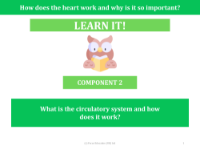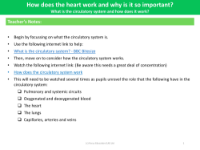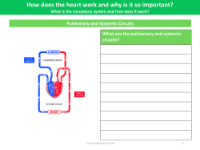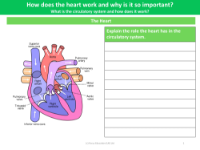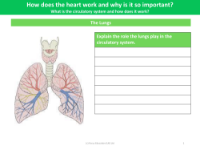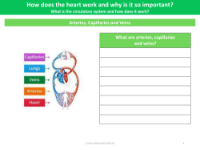Oxygenated and deoxygenated blood - Worksheet

Science Resource Description
The worksheet on 'Oxygenated and Deoxygenated Blood' is designed to educate students about the crucial differences between blood that carries oxygen and blood that has given up its oxygen to the body's tissues. Oxygenated blood refers to blood that is rich in oxygen and is typically found in the arteries, having just left the lungs where it has collected oxygen. Deoxygenated blood, on the other hand, lacks oxygen and is usually found in the veins, returning to the heart after delivering oxygen throughout the body. The worksheet prompts learners to consider the significance of these two types of blood in the context of the human circulatory system.
Furthermore, the worksheet encourages exploration of the heart's function and its vital role in sustaining life. It prompts learners to investigate how the heart operates as a pump, maintaining the circulation of blood by sending oxygenated blood out to the body and pulling deoxygenated blood back for reoxygenation. The material also delves into the workings of the circulatory system as a whole, which encompasses the heart, blood vessels, and blood. This system is responsible for not only transporting oxygen but also for delivering nutrients to cells, removing waste products, and supporting the immune system. The worksheet, provided by Focus Education (UK) Ltd, serves as an educational tool to enhance understanding of these fundamental biological processes.
